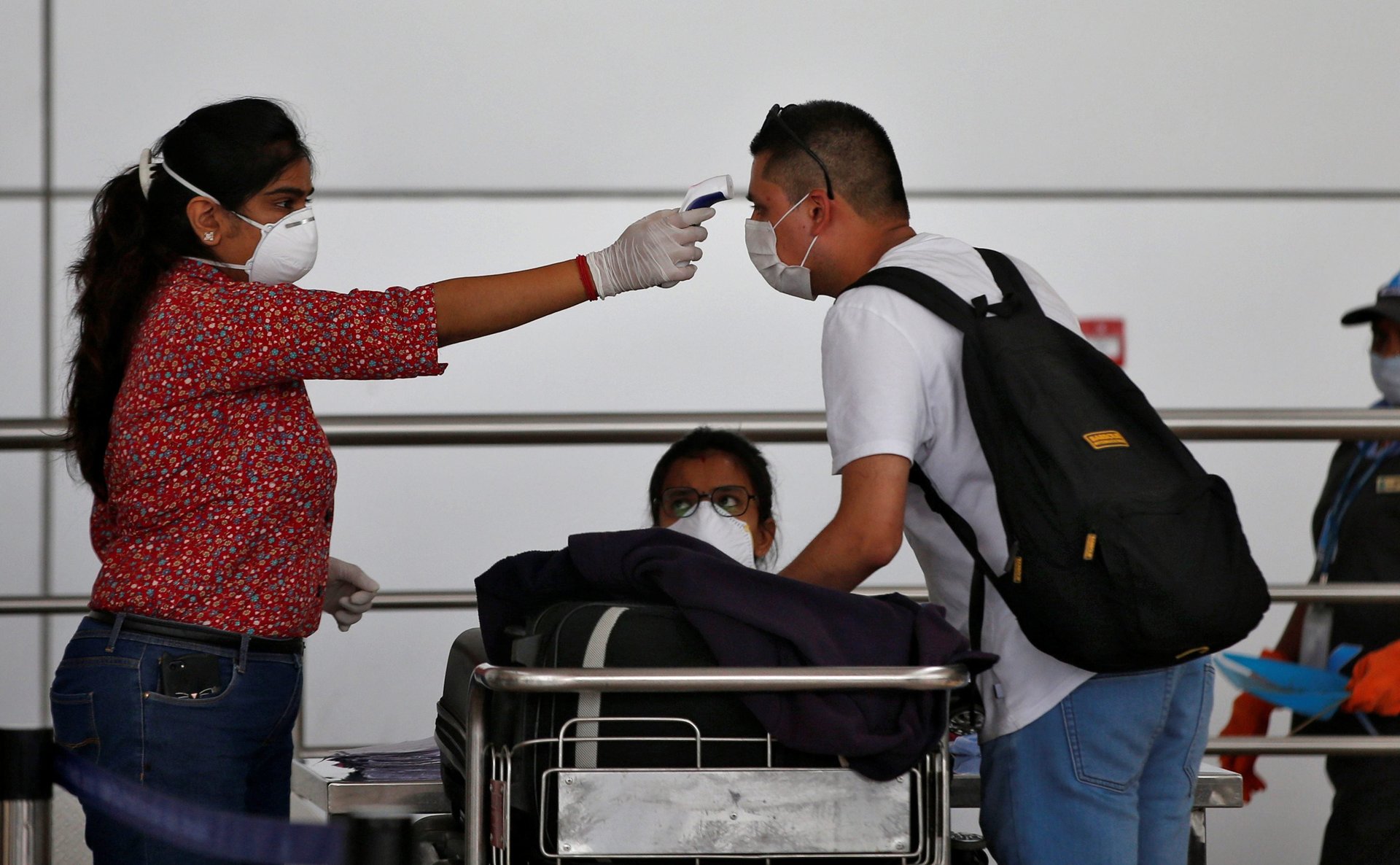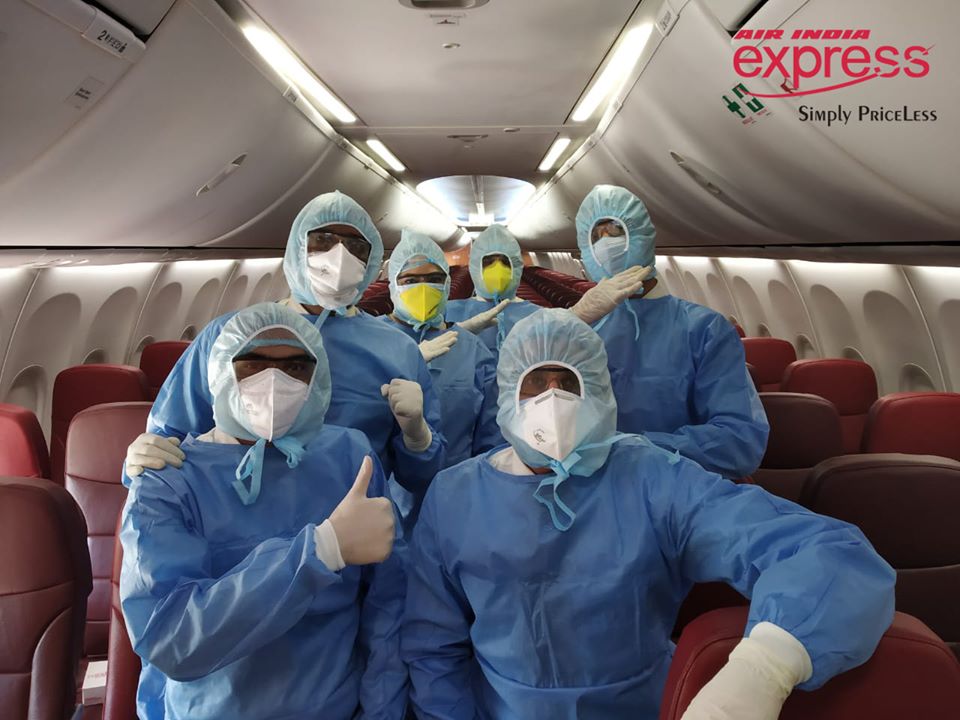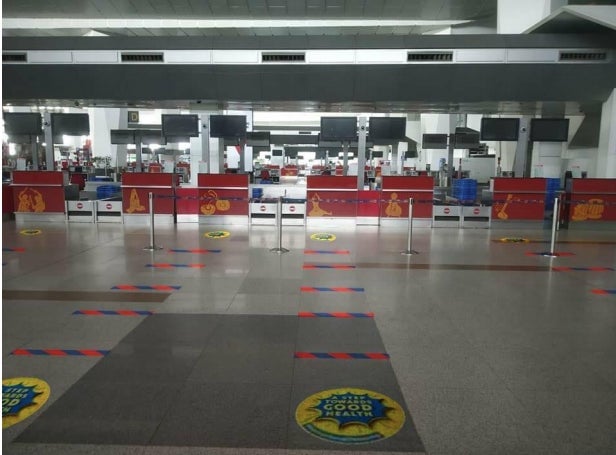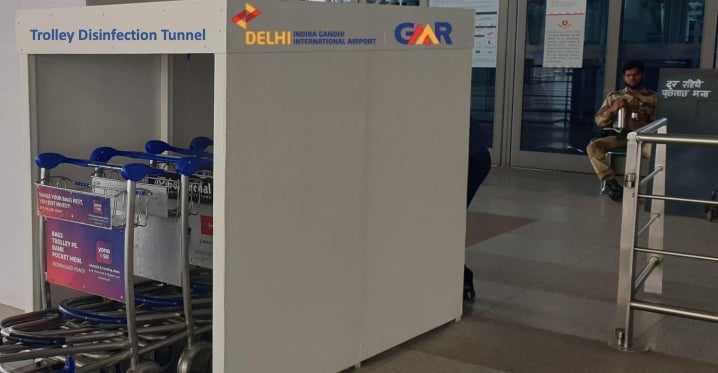How coronavirus will change the way Indians fly
India’s airports and airlines are reassessing their operations in the wake of the Covid-19 pandemic. And this may change the face of flying forever.


India’s airports and airlines are reassessing their operations in the wake of the Covid-19 pandemic. And this may change the face of flying forever.
The ongoing Vande Bharat Mission to bring back Indian citizens stranded overseas provides the first glimpse of this future.
Air India Express, the national carrier’s low-cost arm, which flew back Indians from Sharjah to Lucknow on May 10, shared pictures of its crew wearing personal protective equipment (PPE).

This, among many other things, may become the new normal in the post-Covid-19 world. Quartz explores what Indian travellers can expect on their next flight.
At the airport
The changes being introduced at Delhi’s Indira Gandhi International (IGI) airport and Mumbai’s Chhattrapati Shivaji Maharaj International Airport (CSMIA), among the busiest in India, will require passengers to undergo many behavioural changes. Copies of the plans were reviewed by Quartz.
Social distancing markings: The Delhi airport has already floor-marked passenger areas on the kerbside and in-terminal to ensure social distancing. The airport will also appoint queue managers to ensure six feet distance between travellers.

The Mumbai airport also plans to implement similar norms.
“CSMIA plans to maintain social distancing through distinctive markings at both terminals, maintaining 1.5 metres distance between each passenger. The special markings will be spread across the entry gate, check-in counters, self-check-in kiosks, security checkpoints, food courts, lounge area, and the boarding area, amongst others,” said an airport spokesperson. “Further, seating arrangements at the food court as well as in the terminal building have been reshuffled in a manner that promotes social distancing.”
Safe taxis: Taxis from Kerala’s Cochin International Airport will have a fibre-glass partition between the driver and passengers. Further, the driver will provide a sanitiser to passengers before the journey. Only two passengers, to be seated at the rear, will be permitted. The district administration has also asked drivers to adopt online money transactions.
Minimum contact: The Delhi airport has also distinguished possible departure and arrival touchpoints and has come up with a plan to minimise contact between passengers:
- All trolleys will undergo sanitisation by passing through a disinfection tunnel each time after being used.
- Seating arrangement to be designed to avoid long queues at departure gates.
- Use of scan-and-fly kiosks will be encouraged to avoid long queues. The kiosks will allow passengers to drop off their luggage easily for scanning without agent assistance.
- All passenger baggage will pass through ultraviolet disinfection tunnels at departure and arrival.

E-payment: CSMIA and IGI Airport are pushing cashless transactions at restaurants and retail stores.
Extensive use of PPE: Temporary pop-up shops for selling gloves, masks, and other personal protective equipment (PPE) may become a usual sight at airports. Passengers are being encouraged to wear masks and sanitise their hands at regular intervals. Sanitisers will be provided at the premises.
While boarding a flight
If you plan to fly IndiGo, India’s largest airline, do not expect onboard meals. To follow “stringent safety measures,” the airline has temporarily discontinued the facility and has also barred onboard and duty-free sales, the carrier told Quartz over an email.
It has instructed its staff to wear PPE—masks, gloves, and shoe covers—at check-in counters and boarding gates.
The airline is also focused on aggressively cleaning and sanitising its aircraft. “Areas most often touched such as tray tables, armrests, overhead nozzles, lavatories, galleys are given particular attention and cleansed with cleaning agents and disinfectants approved by World Health Organization and Airbus,” an IndiGo spokesperson said.
“We are doing frequent deep cleaning of aircraft. Fresh air, which enters through the engines pass through our high-efficiency particulate air (HEPA) filters and is then circulated in the cabin. HEPA ensures hospital-level filtration in our aircraft,” the spokesperson added.
The airline also plans to operate its airport buses at 50% capacity to ensure social distancing.
Meanwhile, flyers should expect longer security checks and may have to report earlier than usual. “The end-to-end travel time is expected to increase as flyers would need to report at the airport two to three hours prior to departure,” a spokesperson for Vistara told Livemint on April 26.
Airlines also await further guidelines from the directorate general of civil aviation (DGCA).
The bureau of civil aviation security in April proposed that airlines must not sell the middle seat and that the last three rows should be kept vacant in the event that a passenger needs to be quarantined mid-flight.
“The implication of this is that on a 180-seat narrow-body aircraft, an airline can sell at most 108 seats, representing a 60% load factor. Even if social distancing is not in place, demand conditions are expected to be so weak that passenger loads are in any case unlikely to be any higher than that,” according to the Sydney-based aviation think-tank Centre for Asia Pacific Aviation (CAPA). “This will naturally increase the average break-even fare,” said its report published earlier this month.
However, citing low margins, India’s civil aviation minister Hardeep Singh Puri said in a television interview on May 7 that this option was not viable.